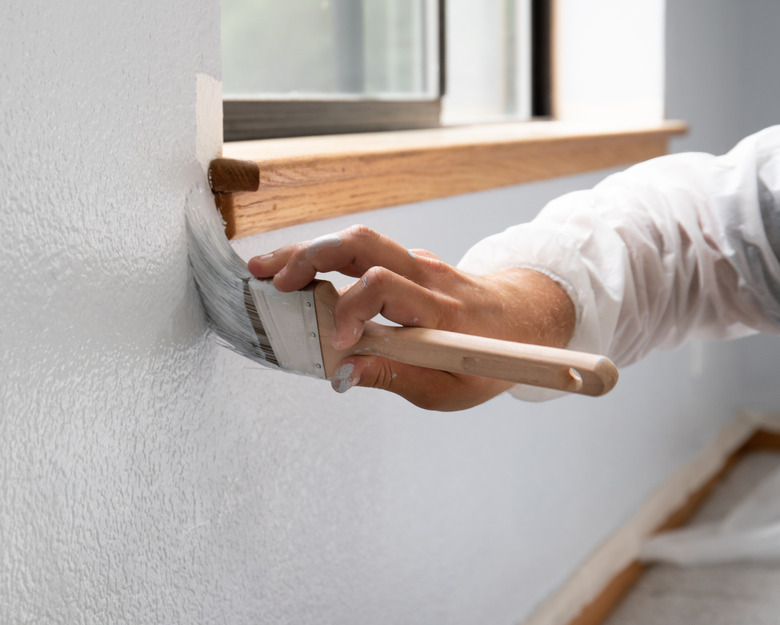How To Touch Up Paint On A Wall
We may receive a commission on purchases made from links.
That scrape, ding, or smudge on the wall bugs you every time you pass it, but can you really touch it up and make it look better? Wall touch-up paint jobs are notoriously difficult to pull off without making the new paint stand out, but you can increase your chances of success with the right tools and techniques. Doing a paint touch up properly can save you the work of repainting the entire room.
How to Match Old Wall Paint
How to Match Old Wall Paint
It's easiest to match a touch-up when you still have the original paint you used on the wall, as long as it's still in good condition. If you need new paint, the best way to match is to get the same brand and sheen in the exact color you purchased the first time. Flat and lower-sheen paints are the easiest to touch up without being noticeable, but you should always match the original sheen to make it blend in.
If you don't know the brand, sheen, or color name of the original paint, there are a couple of ways to find a match. One is to remove a sample of the paint from the wall and bring it to a paint store. They can use a device called a spectrophotometer connected to a computer to measure the color values and estimate a matching formula. The store uses the formula to tint a can of new paint.
The other method is to buy a paint chip book that includes every color available by a specific paint manufacturer. Flip through the book and compare the colors to the wall to find the closest match, then simply get new paint in that color from the paint store. It's best to use a color book from the same brand of paint sold at your paint store. The paint store can copy a color from one brand to another, but it's easier to stick with the original manufacturer's color formula.
Prepping the Wall for Touch-Up
Prepping the Wall for Touch-Up
Before patching up the paint job, you want the wall surface to be as smooth and blemish free as possible to help the new paint blend in:
- Clean the area to get rid of any dirt, grease, or grime that can affect how well things stick. Warm, soapy water and a sponge should do the trick. Rinse and towel dry the wall after cleaning.
- Repair damage by using a spackling compound to fill in the holes. Spread the compound into the space with a putty knife, feathering it outward with the knife at a 45-degree angle. Scrape away any extra compound and let it dry as directed. You can sand the dried patching material with fine-grit sandpaper if it's not level.
- Prime the area you're touching up to help the paint stick better and to help with color blending. Choose a primer intended for indoor use with latex paint. A smaller paintbrush is usually best to help limit the primer to just the affected area. Wait until the primer fully dries before painting.
How to Apply the Touch-Up Paint
How to Apply the Touch-Up Paint
- If you're using the old paint for the job, stir it well to help mix the pigment throughout the paint.
- Use a good paintbrush for the job. The best touch-up paintbrush or paint roller is just large enough for the job to avoid spreading paint too far into unaffected areas.
- To get a similar finish on the new paint area, use the same type of brush or roller used for the original paint job: Fine brush strokes indicate a paint brush; faint stippling indicates a smooth-finish roller; heavier stippling indicate a long-nap roller.
Tip
If you're just covering a small missing piece or a scratch, using an artist's brush may be the best bet because you can just fill in the missing paint to make it less noticeable.
Repainting the Wall
Repainting the Wall
If your touch-up paint dries darker or lighter than the original, you may need to think bigger. With a good paint match, you don't necessarily need to repaint the entire room, unless you're tired of the color and want to try something new anyway.
Instead, you can often paint just the affected wall from one break or transition to another. In most cases, that means painting the full wall from one corner to the other. If the paint is the same color and sheen as the original, you likely will not notice the difference because the corners of the room provide a visual break, and the results will be close enough to the other walls to make it blend in well.
